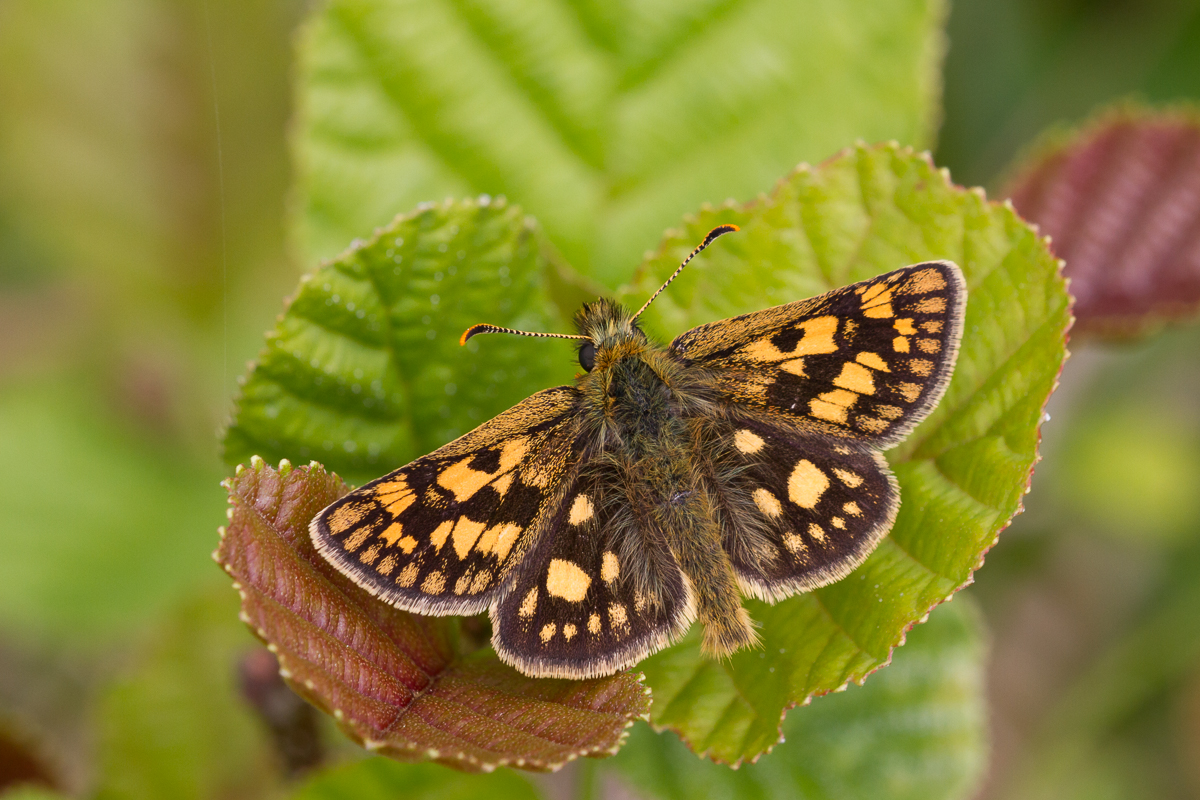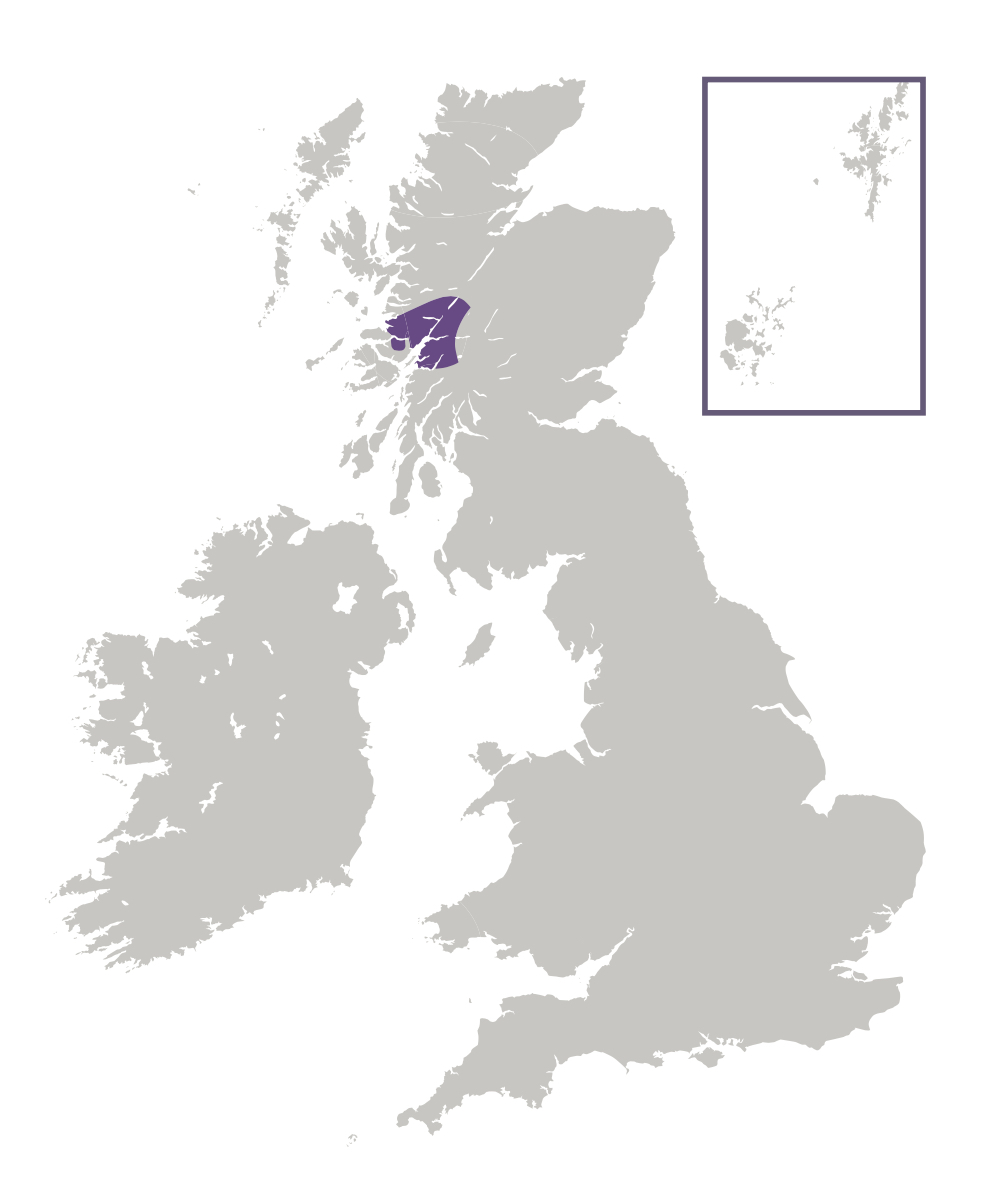
Photo © Peter Eeles
This colourful skipper is distinguished from all other skippers by the numerous yellowish spots found on its upperside - resulting in a chequered appearance that gives this butterfly its name. Like most skippers, this is a fast-flying butterfly, and its chequered markings make it very difficult to track when in flight. This butterfly does not exist in discrete colonies; populations are generally spread over wide areas of habitat. The Chequered Skipper is confined to north-west Scotland where it was first discovered in 1939 at Loch Lochy in West Inverness-shire, where its distribution is centred on Fort William and where the larval foodplant is Purple Moor-grass.
This species formerly occurred in England, inhabiting larger oak woods of central and east England, where False Brome (Brachypodium sylvaticum) was used as the larval foodplant. The butterfly was sadly declared extinct in England in 1976, with its last sites in north-east Northamptonshire. Mackworth-Praed (1945) considers the Scottish specimens to be visibly distinct from the extinct English specimens: "It [the Scottish race] is, at least biologically, a distinct race from that of the eastern counties of England, and appears to be distinct in coloration. Its appearance on May 10th in 1942, and on May 28th in the cold, wet season of 1943, is a month earlier than is normal with the English race. Its coloration is cleaner and harder, with no yellow wash on the underside".
Good weather is required to see this species, which is often difficult to find during the flight period in north-west Scotland! In inclement weather, the adults shelter deep within grass tussocks. The males are the most-frequently encountered of the two sexes and are territorial. They take up position on a suitable perch from which they fly out to investigate any passing object and competing males are soon seen off. Females are less conspicuous than males, and fly low amongst the vegetation when egg-laying. Both sexes take a lot of nectar, favouring blue species such as Bluebell, Bugle and Ground Ivy.

The butterfly favours south-facing, sheltered areas where the larval foodplant, Purple Moor-grass, and nectar sources grow in damp grassland. Sheltered sites are often on the edge of woodland, where the foodplant flourishes in richer soils. Sites are also often situated beside a loch or river. The habitat also typically contains tall shrubs that provide perches for males defending their territory.
Adults feed primarily on Bluebell (Hyacinthoides non-scripta), Bugle (Ajuga reptans) and Marsh Thistle (Cirsium palustre).
The primary larval foodplant is Purple Moor-grass (Molinia caerulea).
